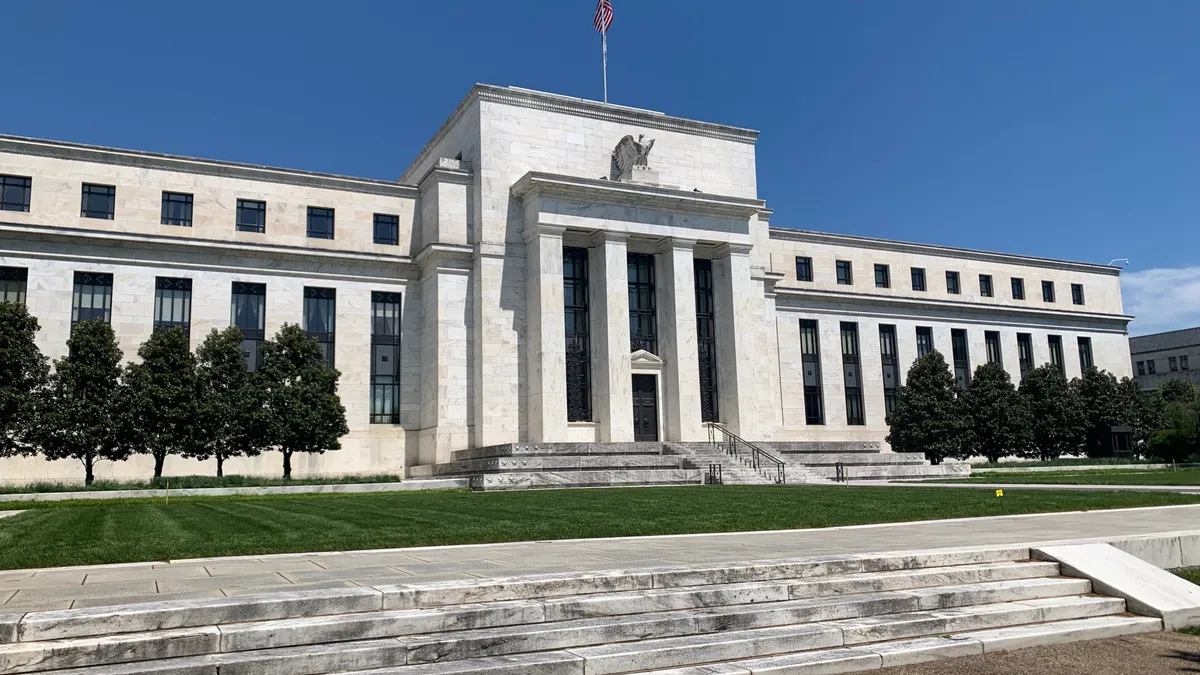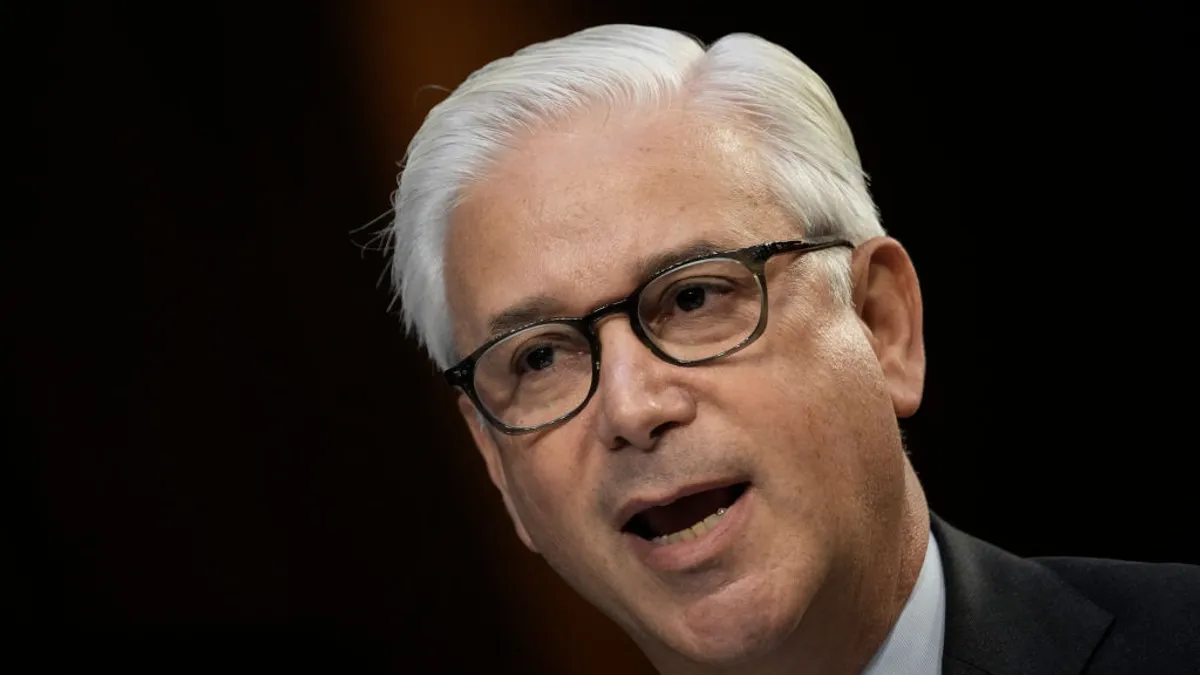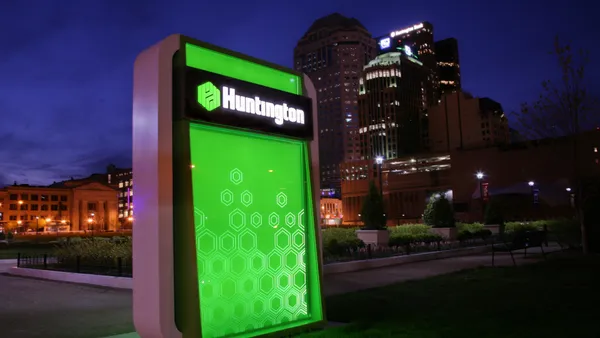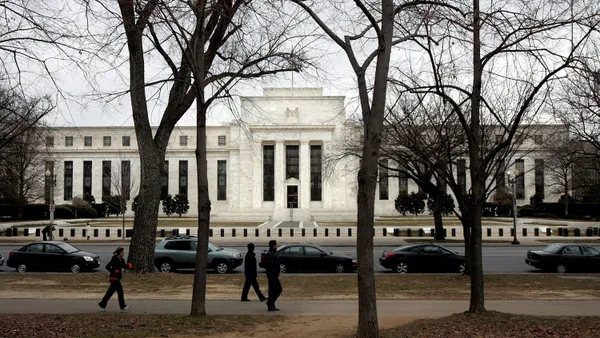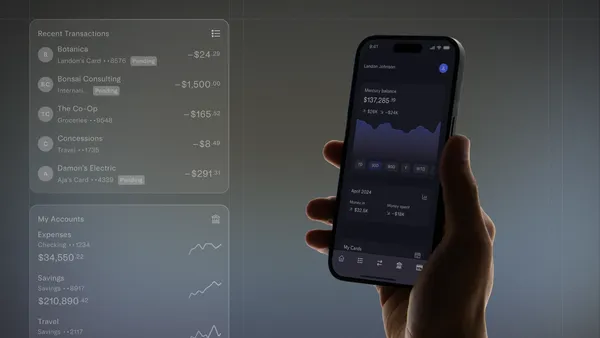UPDATE: June 8, 2021: The Federal Reserve will release the results of its Dodd-Frank Act and Comprehensive Capital Analysis and Review stress tests at 4:30 p.m. June 24, the central bank announced Monday. Four banks — Regions, BMO and the U.S. units of MUFG and the Royal Bank of Canada — have opted in to the tests, alongside the 19 institutions already subject to them: JPMorgan Chase, Bank of America, Citi, Wells Fargo, Goldman Sachs, Morgan Stanley, BNY Mellon, State Street, U.S. Bank, Truist, PNC, Capital One, Northern Trust and the U.S. or North American arms of HSBC, Deutsche Bank, Barclays, UBS, Credit Suisse and TD Bank.
Dive Brief:
- The Federal Reserve said Thursday it will lift its temporary cap on dividend payments and stock buybacks June 30 for banks that pass this year's stress tests. Results of those tests are expected by July 1.
- Banks that fail the stress tests will be subject to current restrictions through Sept. 30, the central bank said.
- Temporary restrictions will lift June 30 for banks that are on a two-year cycle and are not subject to this year's stress tests, the Fed said.
Dive Insight:
For banks that pass this year's stress tests, limits on shareholder dividends and stock buybacks will revert to each bank's stress capital buffer. However, the aggregate dividends and repurchases can't exceed the average quarterly profit from the four most recent quarters.
The Fed in June ordered banks to suspend buybacks and limit dividend payments to the amount they paid in 2020's second quarter, forcing them to stockpile excess cash in case of a rash of loan defaults.
Members of the Financial Services Forum — Bank of America, BNY Mellon, Citi, Goldman Sachs, JPMorgan Chase, Morgan Stanley, State Street and Wells Fargo — had voluntarily halted share buybacks in March 2020 as the coronavirus pandemic tightened its grip.
Banks' strong performance in December's stress test — the second of 2020 — spurred the Fed to permit banks to buy back a certain amount of shares based on their income from the previous year, as long as banks can show they had been profitable and the total amounts are no greater than the average of the banks' earnings over the past four quarters.
"The banking system continues to be a source of strength and returning to our normal framework after this year's stress test will preserve that strength," the Fed's vice chair for supervision, Randal Quarles, said in Thursday's news release.
Quarles's statement comes a day after Treasury Secretary Janet Yellen gave banks' fiscal health a vote of confidence. "Financial institutions look healthier now, and I believe they should have some of the liberty provided by the rules to make returns to shareholders," she told the Senate in testimony Wednesday, according to The Wall Street Journal.
The Fed's revised stance on dividends and stock buybacks marks its second easing of capital requirements in the past week. The central bank last Friday said it would let expire a rule allowing Treasurys and deposits held by the Fed not to be counted toward banks' assets.
Banks lobbied unsuccessfully for the Fed to extend the supplementary leverage ratio (SLR) rule beyond March 31. Jenn Piepszak, JPMorgan Chase's CFO, said in January the nation's largest bank "could simply shy away from taking new deposits, redirecting them elsewhere in the system," if the SLR rule were to end, according to the Financial Times, "or we can issue or retain additional capital and pass on some of their costs, which is certainly something we wouldn't want to do in this environment."
The Fed's SLR move sparked a polarized response among banks and lawmakers. Sen. Elizabeth Warren, D-MA, tweeted last week that letting the rule expire is the "right decision for keeping our banking system strong."
However, Priya Misra, global head of rates strategy at TD Securities, called the SLR move "a mistake."
"I don't think the market was ready for this relief to be removed,” Misra told Bloomberg.


